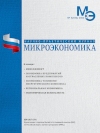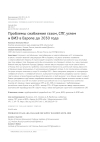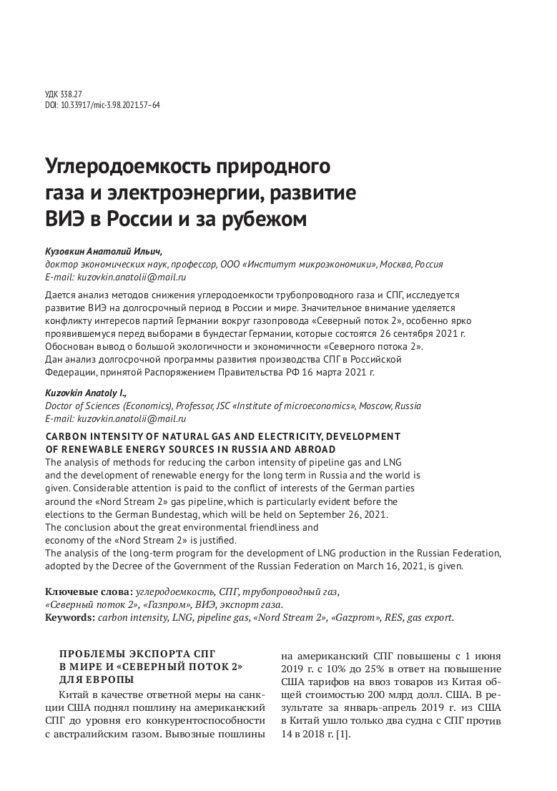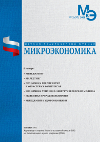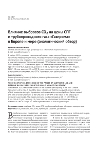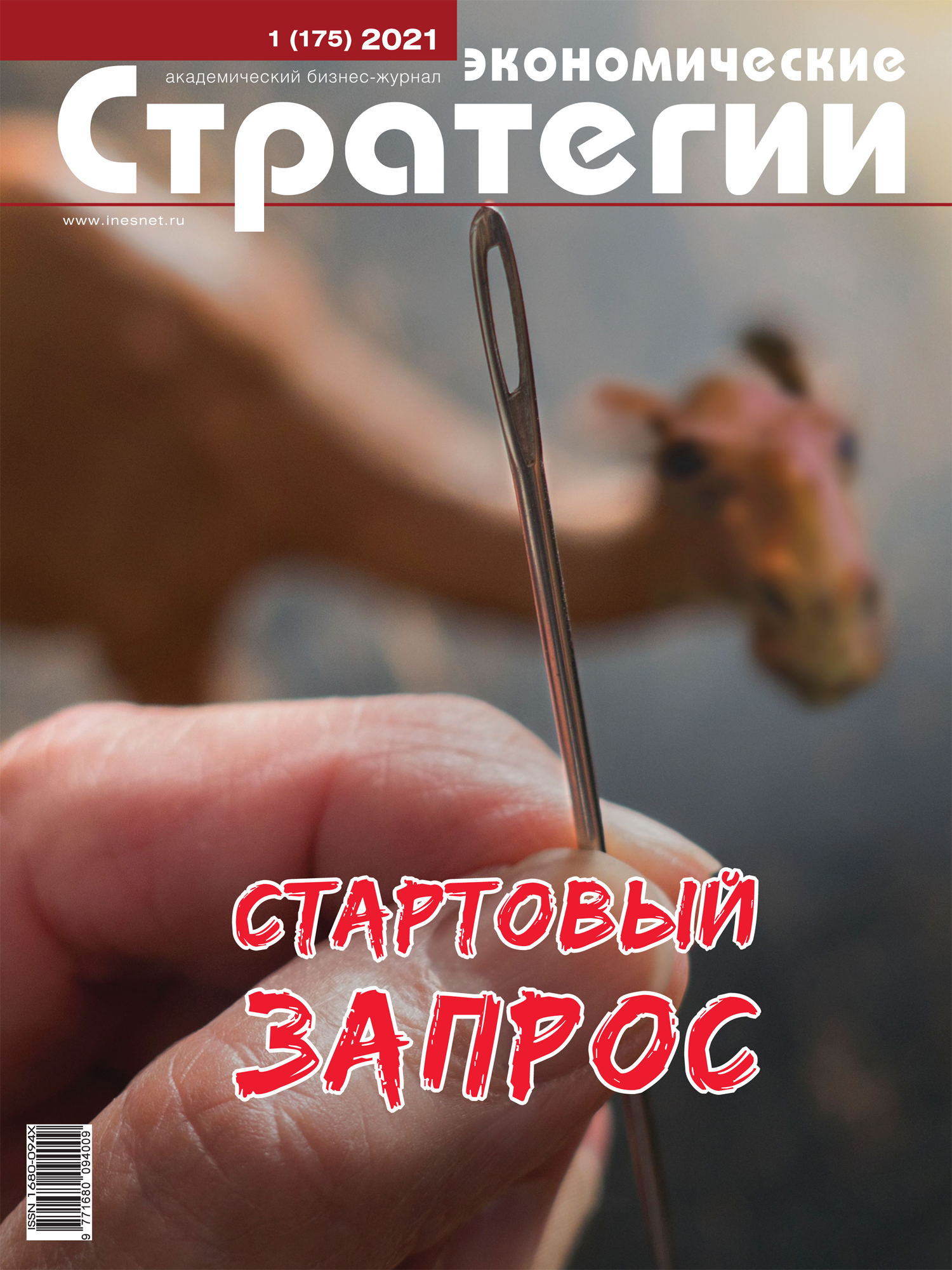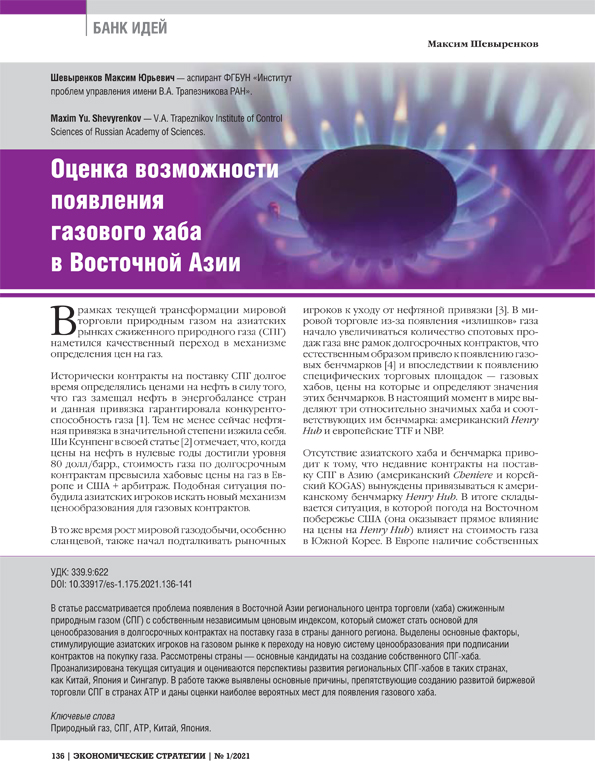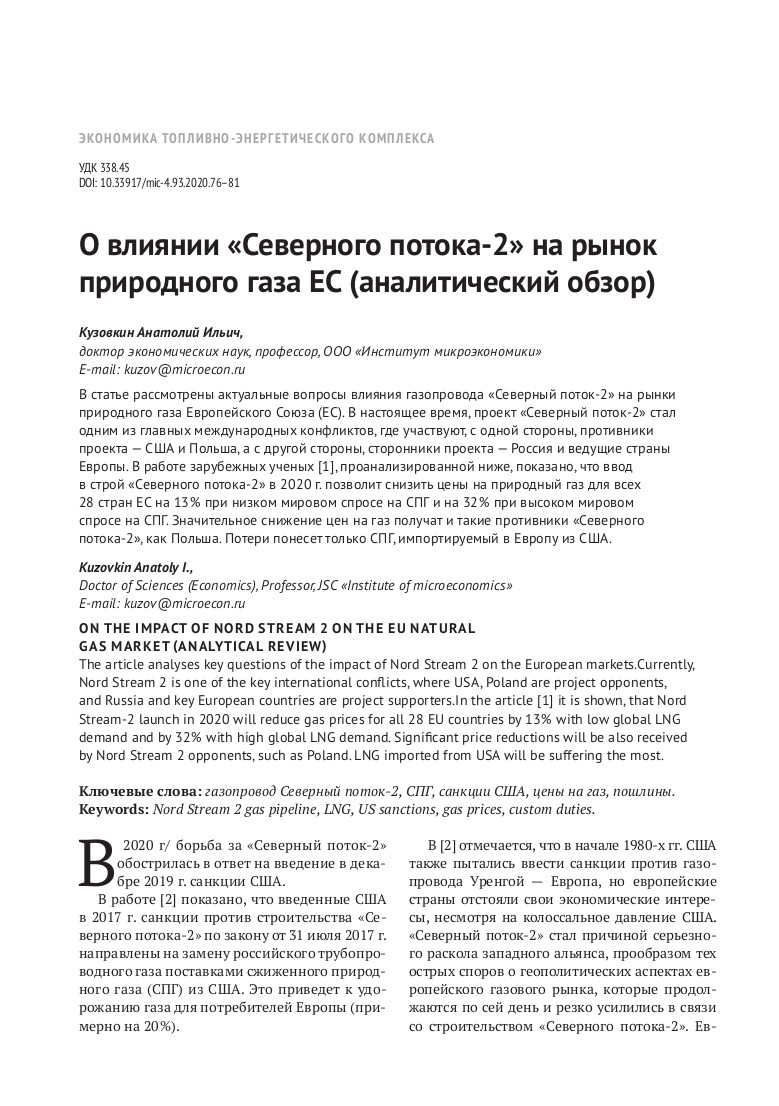Problems of gas, LNG, coal and RES supply in Europe until 2030
DOI: 10.33917/mic-5.106.2022.69-78
The situation with unstable gas supply and energy supply in the EU has become more complicated in connection with the start of the military special operation of the Russian Federation in Ukraine, which has dramatically changed the situation with the energy supply in Europe. The EU predicts to reduce the consumption of Russian gas, while experiencing a shortage of gas.
Germany could use Nord Stream 2 gas, as former German Chancellor Gerhard Schroeder called for in early August this year after his visit to Moscow. This step would solve Germany’s gas supply problems for a long period. However, the EU and Germany previously refused to use Nord Stream 2 for political reasons.
The situation changed radically when, on September 26, 2022, a sabotage was committed on the Nord Stream 1 and Nord Stream 2 gas pipelines, as a result of which sections of gas pipes were torn off near the island of Bornholm (Denmark). As a result, one billion m3 of gas flows out of the pipes. Repair of ruptured pipes can take several months. Europe will remain in autumn and winter without Russian gas.
LNG will not be able to replace Russian gas due to the limited number of points for its reception, as well as the rise in the cost of LNG by 20-30% compared to pipeline Russian gas. In addition, until 2030, EU LNG imports will be limited due to insufficient LNG production capacities in the US and the world, as well as Asian countries’ competition in LNG consumption.
References:
1. Bloomfield H.C., Brayshaw D.J., Troccoli A., Goodess C.M., De Felice M., Dubus L., Bett P.E., Saint-Drenan Y.-M. Quantifying the sensitivity of european power systems to energy scenarios and climate change projections, Renewable Energy, Volume 164, February 2021. pp. 1062-1075.
2. Frank Ch., Fiedler S., Crewell S. Balancing potential of natural variability and extremes in photovoltaic and wind energy production for European countries, Renewable Energy, Volume 163, January 2021. pp. 674-684.
3. Wang S., Tarroja B., Schell L., Samuelsen S. Determining cost-optimal approaches for managing excess renewable electricity in decarbonized electricity systems, Renewable Energy, Volume 178, November 2021. pp. 1187-1197.
4. Umerenkov E. There is gas, but not for you. URL: https://www.kp.ru/daily/27289/4427398/
5. Tikhonov S. Lost in prohibitions // Rossiyskaya Gazeta. August 11, 2022. P. 5. (In Russ.).
6. Alifirova E. New IEA forecast. URL: https://neftegaz.ru/news/finance/742705-novye-prognozy-mea-sokrashchenie-mirovogo-sprosa-na-gaz-v-2022-g-padenie-rossiyskikh-postavok-v-evro/
7. International Energy Agency (IEA) Quarterly Gas Market Report, July 5, 2022 (Gas Market Report, Q2-2022 including Global Gas Review 2021). URL: https://iea.blob.core.windows.net/assets/cfd2441e-cd24-413f-bc9f-eb5ab7d82076/GasMarketReport%2CQ2-2022.pdf
8. Smil V. The use of fossil fuels has increased by 20% since the beginning of the century // Vedomosti. June 02, 2022. (In Russ.).
9. Kuzovkin A.I. Climate, the role of fuel and renewable energy sources. Microeconomics. 2022;3:28-37. (In Russ.).


